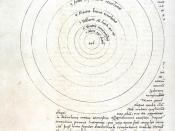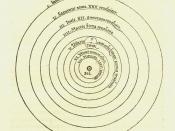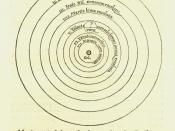Introduction Nicholaeus Copernicus was born in 1473 in present-day Torun, Poland. His maternal uncle, Bishop Lukasz Watzenrode, saw to it that he got a good education. Afterwards, he went to Italy to study medicine and law. He was appointed as a church "ÃÂaccountant' who tracked its finances. The professor of mathematics at the University of Bologna, which whom Copernicus lived, stimulated his scientific and mathematical interests. Copernicus lectured on astronomy at Bologna, and got a degree in canon law at the University of Ferrara, and returned to Poland to resume his position. Between 1507 and 1515, he published a short astronomical paper, De Hypothesibus Motuum Coelestium a se Constitutis Commentariolus, which laid down the groundwork of his heliocentric theory. He took part in the reform of what is today known as the Gregorian Calendar in 1512, and in 1517, started writing De Revolutionibus Orbium Coelestium. He completed it in 1530, but it wasn't published until 1543.
The Geocentric Theory Also known as the Ptolematic system, this stated that the earth was the center of the universe, and that the Moon, the Sun, Mercury, Venus, Mars, Jupiter, and Saturn rotated around them in that order. The Catholic Church and mediaeval scholars (up to Copernicus) adopted this as doctrine, and the Catholic Church has only recently adopted Copernicus' heliocentric theory.
The Heliocentric Theory Also known as the Copernican system, this stated that all planets revolve around the sun, that the earth revolved on its axis, and that the moon rotated around the earth. This theory wasn't paid much attention to until Galileo published Copernicus' works in 1543.
Middle Ground""Brahe's Theory Brahe believed that the earth remained at rest as the sun rotated around it, and that the other planets rotated around the Sun. There were few that believed this theory.
Impact on...


